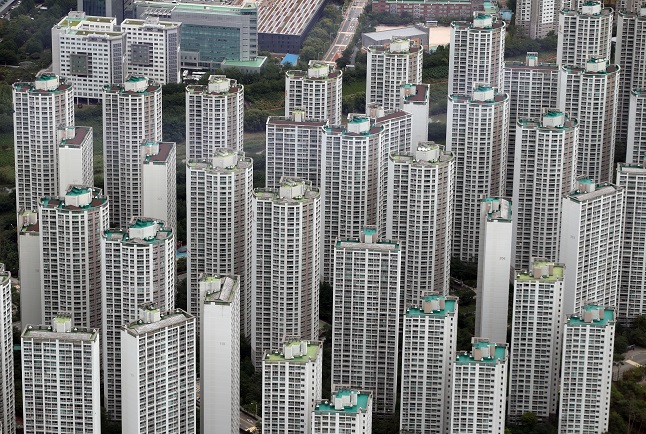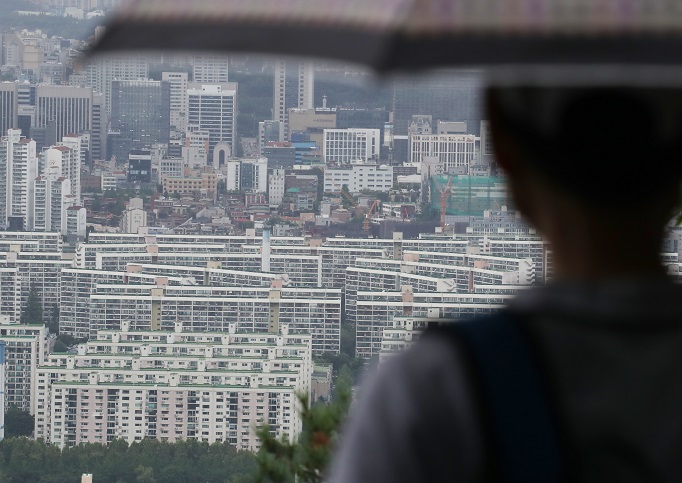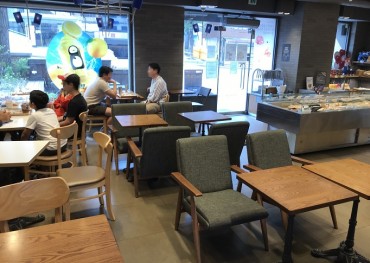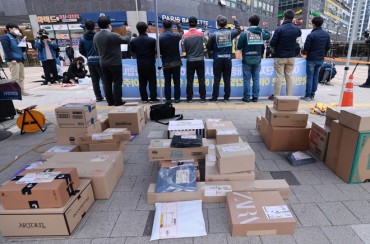
This photo taken on July 15, 2020, shows high-rise apartments in the southeastern Seoul ward of Songpa as seen from an observatory at Lotte Wold Tower, also in Songpa. Songpa is regarded as one of the four southern Seoul wards where housing prices are higher compared with other areas of the capital. (Yonhap)
SEOUL, Aug. 13 (Korea Bizwire) — South Korea will gradually provide a total of 360,000 housing units in Seoul by 2028 as part of its broad home supply plan to stabilize the real estate market, the transport ministry said Thursday.
The government plans to supply the homes mainly to underprivileged people in the capital city by developing state-owned properties and promoting redevelopment and reconstruction projects, the Ministry of Land, Infrastructure and Transport said in a statement.
Under the supply plan, the government will provide 120,000 public homes by developing properties held by the state-run Korea Land & Housing Corp. and the Seoul Housing & Communities Corp. and 200,000 homes through redevelopment of areas with smaller residences and reconstruction of existing apartment complexes, a ministry official said over the phone.
“The government will continue to announce follow-up supply plans as part of its broad plan to supply a total of 1.27 million homes in Seoul and the neighboring areas as early as by 2028. Additional home supply plans in Incheon and Gyeonggi Province near Seoul will be announced sooner or later,” he said.
On Aug. 4, the government announced it will supply 132,000 homes, including 110,000 homes in Seoul, in the capital city and the neighboring areas by 2028 by easing restrictions on construction of residential buildings.
The eased rules allow redevelopment projects of aging apartment complexes to increase their floor area ratio (FAR) to between 300 and 500 percent to build more units from the current 250 percent.
FAR is the ratio of the total plot area to the overall building area and is determined by the size of the plot and width of the road in front of the plot.
The rules also allow such redevelopment projects to build 50-story apartment buildings in the greater Seoul area, far higher than the existing 35-story height restriction.
The government has adopted the presale price cap for newly built apartments and the system to retrieve excessive gains from the reconstruction of aged apartments, which were not welcomed by existing apartment complexes.
Prices of apartments in Seoul jumped 55 percent to 26.78 million won (US$22,400) per 3.3 square meters as of July from 17.31 million won in May 2017, when the current government took office, according to the Korea Appraisal Board.
The soaring home prices in the greater Seoul area have been a headache for policymakers, as President Moon Jae-in’s approval ratings have nose-dived amid public uproar.
In July, the government announced its toughest measures yet to rein in rising housing prices, as a series of steps, including tax hikes and loan regulations, failed to put the brakes on soaring home prices.
Under the proposed tax measures, the government will raise property ownership tax rates for multiple-home owners.
More recently, the ruling Democratic Party, alarmed by spiking home prices and growing public outcry, rammed through bills to allow tenants to extend their two-year jeonse contracts for another two years and place a cap of 5 percent on increases in jeonse deposits when the contracts are renewed.
Jeonse is a localized property lease system in which tenants pay a large deposit instead of monthly rent. It usually consists of a two-year contract, with the homeowner paying back the principal upon the completion of the contract.
Experts warned the passage of the tenant protection laws will push up the jeonse home prices in the long term and landlords will increasingly switch jeonse contracts to monthly rental deals without a lump-sum deposit.
(Yonhap)







